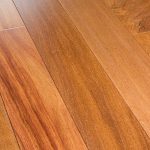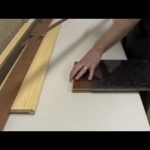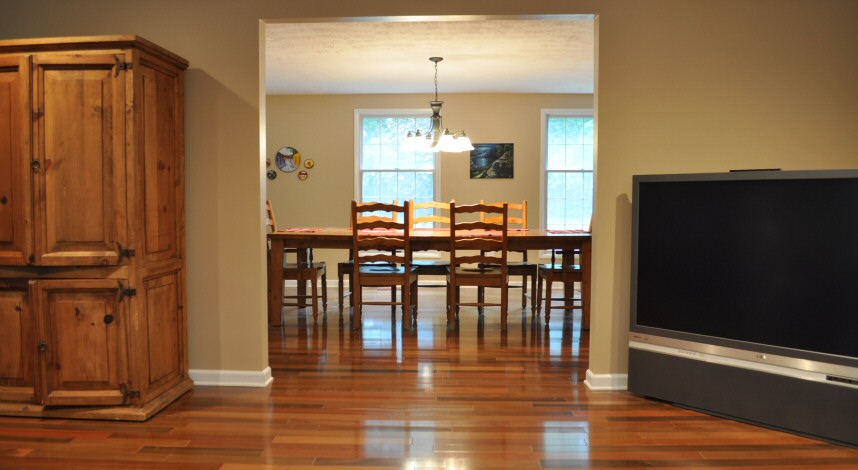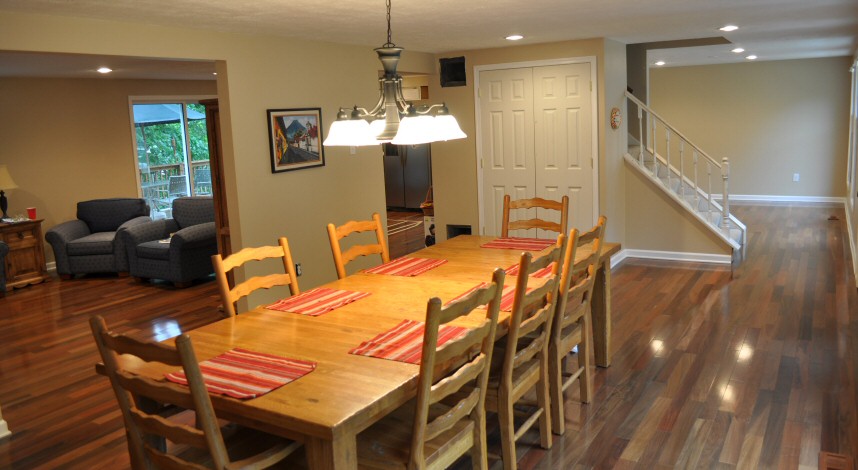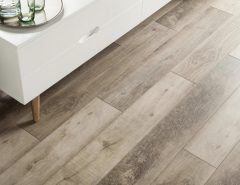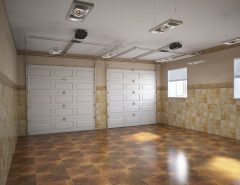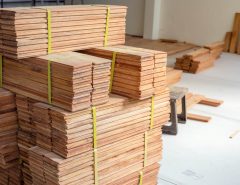Hardwood flooring installations are what most would consider to be an advanced project by most professional installers. But, if you have decided that your installation skills are up to the task, here’s a post from popular home improvement blog One Project Closer Co-founder Ethan Hagen with 5 basic tips you can use to ensure success.
***
Installing hardwood flooring can seem like a daunting task for a homeowner, and it’s true that not every do-it-yourselfer is up to the challenge. A beautiful hardwood floor is the result of careful planning and some important know-how. This article is not meant to be a guide for installing hardwood floors, but rather how to avoid common pitfalls. For those brave souls undertaking this project, I offer up these five tips for success.
1. Examine your subfloor
If your subfloor is in poor condition, putting down hardwoods won’t help. You need to have a relatively level subfloor, and any changes in height should be less than 3/16″ over a 6′ span. There are a couple different ways to level out a subfloor. The easiest scenario occurs when OSB or plywood isn’t anchored down very well and adding a handful of screws takes care of the problem. More drastic measures include planing the joists or even installing an additional layer of plywood with an appropriate “filler” to achieve uniformity.
2. Acclimate the wood
Increased moisture causes wood to expand while less moisture causes wood to contract. This is called wood movement. It’s important for hardwoods to acclimate in the space where they will be installed. Wood that is not fully acclimated will result in gaps during the winter and possibly cupping during the summer. To avoid this, open and spread out the boxes for about a week, and be sure to run the A/C or heat at normal levels. Never store the hardwoods in a moisture rich environment like an unfinished basement.
Even after proper acclimation, the wood will expand/contract as moisture levels change. That’s why it’s important to leave about a 1/4″ gap around the perimeter of your install. Don’t worry, this is concealed with baseboard and molding. If moisture is a major concern for your area, consider installing engineered wood as many do not require acclimation.
3. First Row Must be Straight
It’s very important for the first row of hardwoods to be installed straight as every row after will be laid relative to it. A crooked first row will result in large curves as you progress through the space. Exterior walls are often not square so consider marking a line parallel to an inside wall, opposite of your starting position. Mark the locations of your joists and install the hardwoods perpendicular. Make sure you drive a fastener into a joist at each opportunity. Consider what obstacles, like a fireplace hearth, are present how different starting points will make the job easier.
4. Top nail and glue the boards
You’ll encounter scenarios where the flooring nailer will not fit, like when laying the last board. Invariably, you’ll need to top nail or face nail these boards. Grab your wood glue and add a bead to the groove of the previous board. Use scrap wood and a pry bar to securely wedge these boards in place. Be sure to hold the finish nailer with adequate force to prevent it from jumping around and marring the surface of the board.
5. Buy or Rent the Right Tools
Don’t kid yourself that you can make rip cuts with a jig saw or that you don’t really need a pneumatic flooring nailer. Having the right hardwood flooring installation tools will make your job infinitely easier and the finished product will look better. At the minimum you’ll need:
- Miter saw- for making cross cuts as each row meets the wall.
- Table saw- for making rip cuts where a full board width is not acceptable.
- Cleat-nailer or Stapler- often it’s economical to rent one of these. Cleats are usually easier to find.
- Finish nailer- for blind nailing and top nailing.
- Compressor- Get a compressor to power all the different nailers. Make sure to set the psi so that is properly sinks each fastener.
- Jamb Saw- This is a simple handsaw that is used for cutting doorjambs.
- Chalk line, nail set, tape measurer.
There are unique challenges in every hardwood install. Hopefully these tips help you tackle some of them. With the appropriate preparation and a good start, you’ll be rolling along in no time. Good luck!
***
Thanks, Ethan!
For you Twitter-heads who found this article useful, you can follow One Project Closer on Twitter for even more tips about installing wood floors.
You can also subscribe to the One Project Closer blog, too.
Cheers,
Rob.


